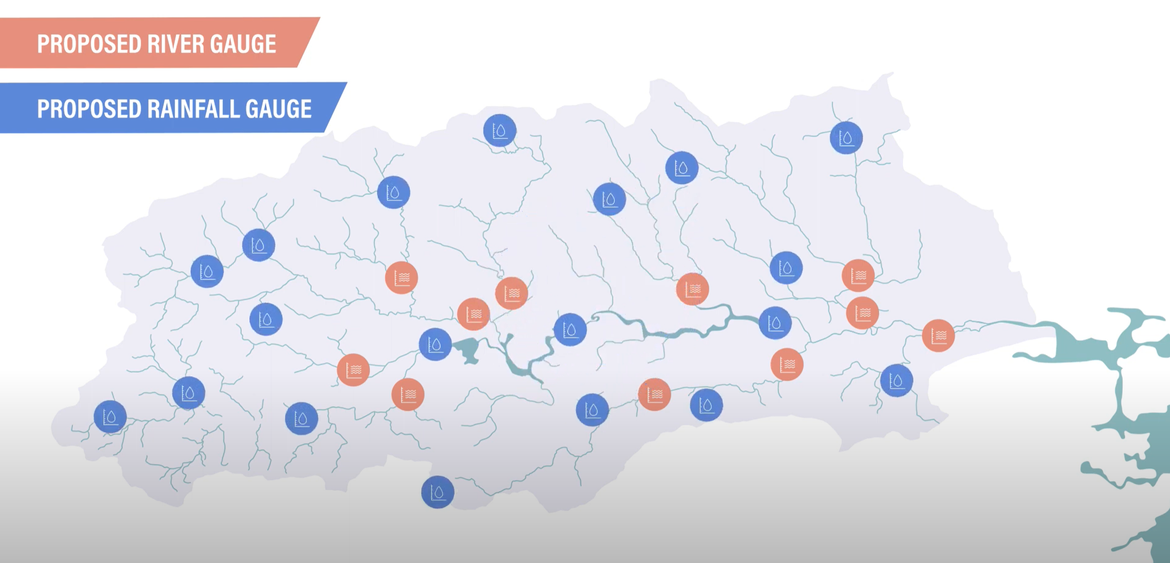Flood Forecasting System
A key component of the LLFRS is the optimisation of the operation of both hydroelectric dams to regulate flow downstream and thus minimise flood impacts during periods of extreme rainfall and/or high tides.
To maximise the benefit, it is imperative that there is good foresight of high tides and large rainfall events. Accordingly, as part of LLFRS, a state of the art integrated fluvial and tidal flood forecasting system has been developed to inform the operation of the dams during times of high flood risk. The systems uses both high resolution rainfall forecasts as well as real time recorded rainfall, forecasted astronomical tides as well as predicted surge (based on forecasted wind speed and direction and forecasted astronomic pressure). The system also includes error correction based on record water levels at key points along the main watercourses to take account of catchment wetness.
Key to the success of the system will be reliable data. In terms of forecasted data, the system uses the highest resolution data available from Met Eireann (Harmonie) as well as data from the European Centre for Mid-Range Weather Forecast (ECMWF). In terms of real time data, the system will use a comprehensive network of rainfall and river gauges.
As part of its national hydrometric programme, OPW has implemented a comprehensive upgrade of its gauge network in the Lee Catchment (both rainfall and river gauges) which are now providing a higher resolution of data on rainfall and river flow in the catchment. The network of gauges includes significant redundancy and backup systems.
